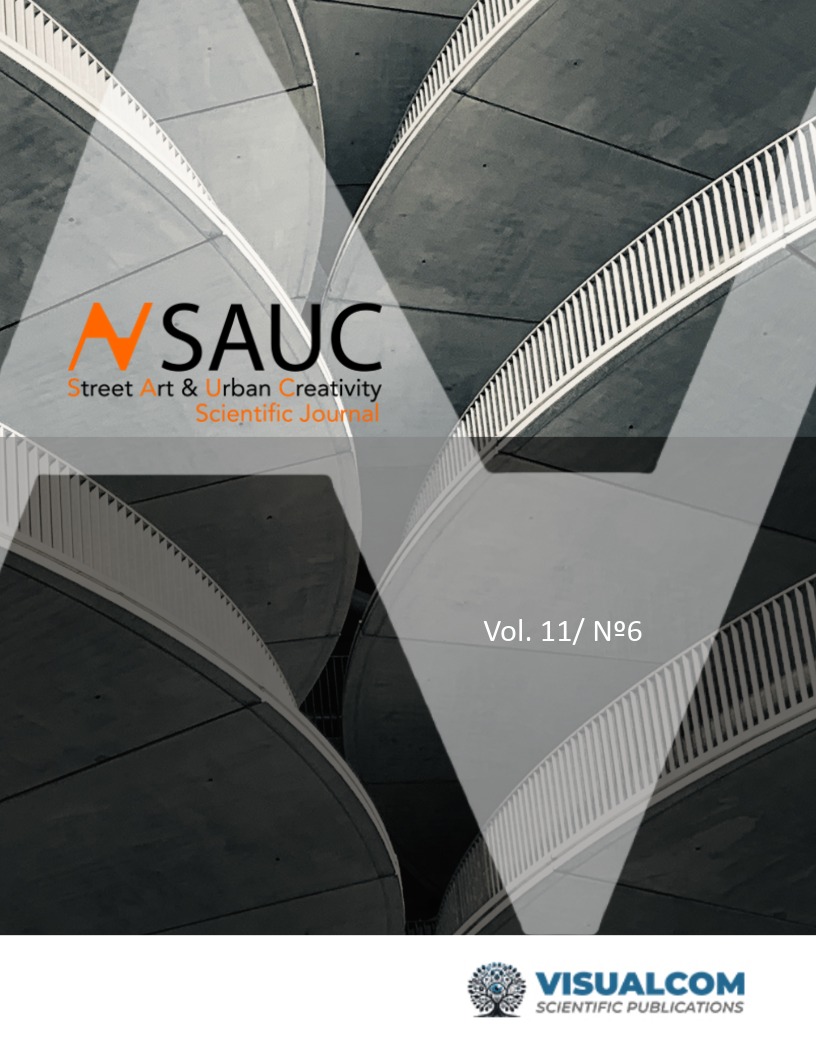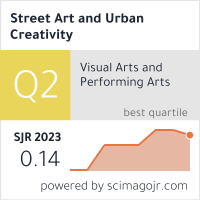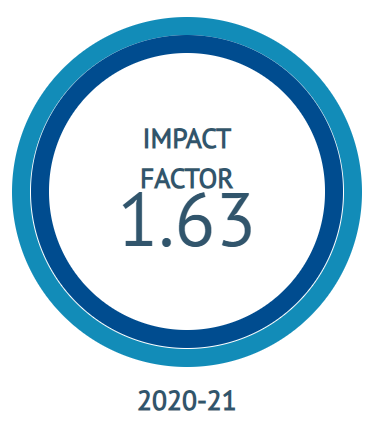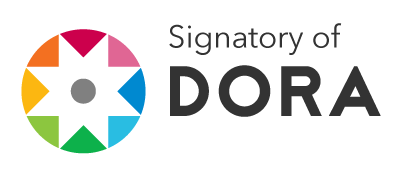Creativity and Co-Creation in Higher Education:
Ergonomics in the Design of Academic Spaces
DOI:
https://doi.org/10.62161/sauc.v11.5853Keywords:
Co-Creation, Creativity, Space Design, Higher Education, ErgonomicsAbstract
Creative thinking is a key transversal skill in professional, educational, and personal contexts. While creativity has been widely studied in terms of its definitions, measurement, and training, few investigations have explored its relationship with space, ergonomics, and design. This research proposes the development of an instrument to analyze educational environments that foster creative thinking. Through a case study, data were collected to identify and assess physical-perceptual and sensory-perceptual aspects of educational spaces involved in creative activities. As a result, the Spatial-Perceptual Verification Matrix for Educational Experiences was designed. This tool allows for the evaluation and management of well-being conditions such as spatial flexibility and comfort. The matrix aims to contribute to the creation of environments that support creativity in the classroom, enhancing the development of creative thinking in both students and teachers through the intentional design of learning spaces.
Downloads
Global Statistics ℹ️
|
241
Views
|
135
Downloads
|
|
376
Total
|
|
References
Alencar, E.M. & Fleith, D.D. (2003). Contribuições Teóricas Recentes ao Estudo da Criatividade. Psicologia: Teoria e Pesquisa, 19(01), 001-008. https://doi.org/10.1590/S0102-37722003000100002
International Ergonomics & Human Factors Association. (2000). What is Ergonomics (HFE). https://iea.cc/what-is-ergonomics/
Brilinger, C. O., Cole, D., Batiz, E. C., & de Oliveira, M. A. (2017). Contributions of ergonomics for the knowledge society. [Contribuições da ergonomia para a sociedade do conhecimento] Espacios, 38(11)
Capdequi, C. S. (2021a). El malestar de la descivilización: Creatividad como principio de realidad. Revista Española de Sociologia, 30(1). https://doi.org/10.22325/fes/res.2021.02
Castro, F. (2021). El Presente que Nos Habita. Análisis del mundo contemporáneo y de la comunicación digital. Fondo Editorial Colegiatura.
Ciskszentmihalyi, M. (1996). Creatividad. El fluir y la psicología del descubrimiento y la invención. Barcelona: Paidós.
Contreras, W. (2009). Lista De Verificacion. http://listadeverificacion.blogspot.com/2009/03/lista-de-verificacion.html
Costa, A. P. L., & Villarouco, V. (2019). An application of ergonomics in workstation design in office. En S. Bagnara, R. Tartglia, S. Albolini, T. Alexander & Y. Fujita (Eds.) Proceedings of the 20th Congress of the International Ergonomics Association. Advances in Intelligent Systems and Computin (vol 825). Springer, Cham. https://doi.org/10.1007/978-3-319-96068-5_59
Cross, N., Elliot, D., & Roy, R. (1982). Diseñando el Futuro. Editorial Gustavo Gili S.A.
Hall, E.T. (2005). La Dimensión Oculta. Editorial: Siglo XXI editores.
Hughes, G.D. (2003). Add Creatuvity to your Decision Process. The Journal for Quality & Participation.
Jösch Krotki, A. (2023). Una aproximación a la relevancia de las prácticas creativas en la educación. Revista 180, (1). https://revista180.udp.cl/index.php/revista180/article/view/1296
Kadefors. (1998). Ergonomía Herramientas y Enfoques, capítulo 29, 29-61.
Matas, J. A. V. (2020). La educación en la Technoaldea: ¿Privación de la creatividad? Foro De Educación, 18(2), 259-275. https://doi.org/10.14516/FDE.737
Melo-Zamora, M. D., Cifuentes–Bedoya, D. H., Ramos–Reyes, C. A., & Segovia–Borray, C. E. (2021). Desarrollo, creatividad e innovación: Factores para la creación de un centro de desarrollo empresarial. RISTI - Revista Iberica De Sistemas e Tecnologias De Informacao, (E39), 341-354.
Monreal, C. (2000). ¿Qué es la Creatividad? Biblioteca Nueva.
Palencia, C. (2023). Pensamiento Creativo para el Diseño de Experiencias de Aprendizaje Memorables. REVISIÓN HUMANA. International Humanities Review / Revista Internacional De Humanidades, 19(4), 1–9. https://doi.org/10.37467/revhuman.v19.4928
Palencia, C. (2024). Museos, redes sociales y universos transmedia: creación de contenidos para la participación activa del público. REVISIÓN VISUAL. Revista Internacional de Cultura Visual, 16(3), 229–238. https://doi.org/10.62161/revvisual.v16.5259
Pineda, C., Sánchez, V., & Amariles, O. (1998). Lenguajes objetuales y posicionamiento. Bogotá: Universidad Jorge Tadeo Lozano.
Puentes-Lagos, D. E., & García-Acosta, G. (2012). Tecnología y pensamiento futuro del trabajo desde la ergonomía en momentos de crisis global. Revista De Salud Publica, 14(1 SUPPL.), 122-137. https://scielosp.org/pdf/rsap/2012.v14suppl1/122-137/es
Rodríguez Ruíz, Y., & Pérez Mergarejo, E. (2016). Macro-ergonomic diagnosis of colombian organizations using ergonomics maturity model. Revista Ciencias De La Salud, 14, 11-25. https://doi.org/10.12804/revsalud14.especial.2016.01
Saenz, L. M. (2005). La Relación Ergonomía y Diseño. En Ergonomía y Diseño de Productos. Criterios de análisis y aplicación. Medellín: Universidad Pontificia Bolivariana.
Santos, A., Bívar, F., & Ágoas, V. (2017). Human Centric Lighting: New Paradigm or Common Sense? Workshops on Ophthalmology: Investigation in Ophthalmology. En Lisbon, Qta. da Marinha. Commission Interrnationale de L'éclairag (CIE).
Sen, A. (1982). Choice, Welfare and Measurement. Oxford, Blackwell.
Silva-Roquefort, R., & Muñoz, F. (2019). Urban ergonomics as an adaptative strategy of public space. Bitácora Urbano Territorial, 29(2), 159-168. https://doi.org/10.15446/bitacora.v29n2.70141
Urdaneta Urdaneta, G. A., & Terán Reales, V. A. (2020). Gestión de la ergonomía cognitiva como práctica preventiva en educación superior. Revista Venezolana De Gerencia, 25(Special Issue 4), 333-346.
Varas, J. R. (2018). Cognitive ergonomics as a factor in ensuring the quality of educational processes in virtual learning environments (VLEs). CISCI 2018. Memorias, 2, 150-155.
Downloads
Published
How to Cite
Issue
Section
License
Copyright (c) 2025 Authors retain copyright and transfer to the journal the right of first publication and publishing rights

This work is licensed under a Creative Commons Attribution-NoDerivatives 4.0 International License.
Those authors who publish in this journal accept the following terms:
-
Authors retain copyright.
-
Authors transfer to the journal the right of first publication. The journal also owns the publishing rights.
-
All published contents are governed by an Attribution-NoDerivatives 4.0 International License.
Access the informative version and legal text of the license. By virtue of this, third parties are allowed to use what is published as long as they mention the authorship of the work and the first publication in this journal. If you transform the material, you may not distribute the modified work. -
Authors may make other independent and additional contractual arrangements for non-exclusive distribution of the version of the article published in this journal (e.g., inclusion in an institutional repository or publication in a book) as long as they clearly indicate that the work was first published in this journal.
- Authors are allowed and recommended to publish their work on the Internet (for example on institutional and personal websites), following the publication of, and referencing the journal, as this could lead to constructive exchanges and a more extensive and quick circulation of published works (see The Effect of Open Access).













